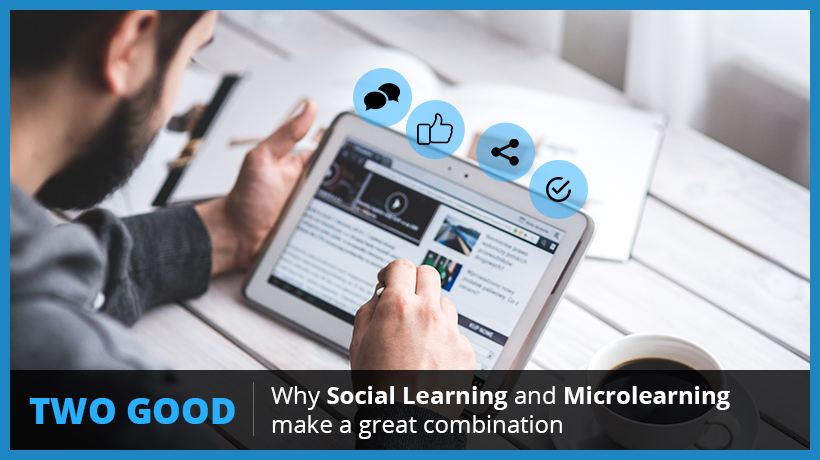
Personalized training is a great approach to provide highly relevant content to learners, and one that matches their proficiency and interest. In this article, I address 6 key questions that may arise as you adopt personalized learning for employee training.
We know that “one size does not fit all.” Even in training, there is a demand to offer custom and more relevant content to learners (vis-a-vis a generic content). This mandate can be achieved by offering Personalized learning for employee training.
Interestingly, the concept of Personalized learning has been in existence for over 50 years, but only in recent times do we see its application in online training. Before you invest in Personalized learning for employee training, you may have some questions on your mind. In this article, I list and address 6 of these questions. My focus is on providing insights on:
- The significance of Personalized learning for employee training.
- The benefits of adopting it.
- The techniques that you can choose from to offer Personalized learning for employee training.
- The areas you can use it for (that is, where it would find the right fit).
- Associated aspects that you should be aware of before you implement it.
- Additional investments that can help you leverage on as you offer Personalized learning for employee training.
Q1. What Is the Significance of Personalized Learning for Employee Training?
Today, online training is an integral part of training delivery for organizations. With the wider adoption of eLearning and notably Mobile Learning, L&D teams are able to reach a geographically spread audience in a short time.
While this is a great advantage, it also brings in the challenge of rolling out the same training to learners in different roles/regions as well as with different proficiency levels (and different learning styles). This is triggering the need to offer Personalized Learning for employee training as learners are pushing for a customized learning experience (not a generic one).
Q2. What Do the Learners Want and How Can Their Needs Be Addressed with Personalized Learning for Employee Training?
Modern learners want the flexibility of being able to “pull” the required resource/course rather than being “pushed” to a generic one. Additionally,
- They want to see highly relevant content rather than a generic one. Only then would they prioritize spending time on the training.
- They want the online training to give them the flexibility so that they can configure custom learning paths. This way, they can pick sections that they truly need to go through.
- Today, most organizations have a multi-generational workforce that would have a mix of 4-5 distinct profiles. Each profile of learners wants the flexibility to pick a format that resonates best with them.
This is exactly where a Personalized learning based approach for employee training comes to your rescue!
Q3. How Does Personalized Learning Benefit Employees?
A Personalized learning based plan for employee training offers several benefits. It is a learner-centric approach that empowers learners to choose what works best for them.
- Learners get higher value from a Personalized learning based training as it matches their individual learning goals and they now have access to relevant content.
- It should come as no surprise that Personalized learning based employee training shows better completion rates, higher application, and has a positive impact on ROI.
Q4. Can All Trainings Be Mapped to a Personalized Learning Based Approach for Employee Training?
In theory, “yes” but practically, the answer is “no.”
The creation of Personalized learning entails additional costs as well as extra lead time to design, develop, and deploy them. Also, not all training courses are amenable to Personalization.
Let me outline the process steps that will help you understand how Personalized training development is done and what aspects you should be mindful of. Accordingly, you can determine which training programs could be Personalized and what techniques could be used.
Step 1: You need to begin with a creation of the master (or the superset course) as well as the related learning assets.
Step 2: Looking at the nature of the Personalization you want to offer, you need to create the required customized or Personalized variants. This could typically include:
- Selection by learners based on the region they work in.
- Selection of their role.
- Selection based on their proficiency.
- Selection based on their interest.
Given the nature of the training, you may also want to offer:
- Avatars to Personalize the learning journey.
- Personalized feedback.
- Same course/learning resources in different formats to suit different learning styles.
Step 3: Once you zero in on the degree of Personalization, you need to adapt the master (or the superset course) and generate the custom learning assets and learning paths. As a result, there would be associated additional costs and extra lead time to develop them.
Step 4: Remember, not only would you have to factor for the additional costs and lead time the first time, but you will also need to plan for the maintenance and updates for all variants. This is a crucial investment for the Personalized training to continue to be relevant.
Q5. What Kind of Trainings Would Benefit from the Usage of a Personalized Learning Based Approach for Employee Training?
The following three Formal training programs are a great fit. I have added some suggestions to offer Personalized learning for these employee trainings:
- Induction and Onboarding trainings: These could be Personalized to a region, language, and role.
- Soft Skills trainings: These typically use Scenario Based Learning that could be Personalized to offer specific feedback and recommendations.
- Application Simulations based trainings: As a first step, these can be made granular by using a Microlearning based approach. Then, you can create customized learning paths based on learner proficiency. The Pre-Test could be a great way to determine the current learner proficiency and then provide a recommended learning path.
Q6. What Are the Other Measures That Can Enhance the Impact of Personalized Learning for Employee Training?
While you can use Personalized trainings to enhance several of your Formal trainings, they can be used as effectively to support other training and learning formats too.
- You can uplift the engagement quotient on some of the key strategies that you may already be using by offering their Personalized variants. For instance, Personalized videos or Personalized Gamification based learning assets.
- You can foster a culture of continuous learning that can be aligned to help learners move up on their proficiency levels through custom learning pathways.
- You can leverage on Content Curation, Next Gen LMS, as well as LXP platforms. Both feature concepts of learning pathways. You can add learning resources that learners can pick from to design their own learning paths. You can also offer recommendations (based on roles/surveys that show the learners’ interest areas).
- Besides online training and curated resources, you can also use Mentoring and Coaching to support the individual’s learning and growth.
As you would have noted, a Personalized learning based approach for your employee training is a powerful approach that enables you to offer highly relevant content that would resonate very well with the learners. I hope my article gives you the pointers you can use as you look at adopting Personalized learning for your employee training.
If you have any specific queries, do contact me or leave a comment below.
Read More
- Top 10 Benefits Of Personalization Of eLearning For Employee Training
- 5 Reasons Why You Should Develop a Personalized Learning Plan
- Benefits Of Personalized eLearning – Featuring A Case study For Instructional Designers
- How Personalized Gamification Can Increase Learner Engagement
- Enhance Your Learning Strategy with the eLearning Trends in 2019 - August 8, 2020



